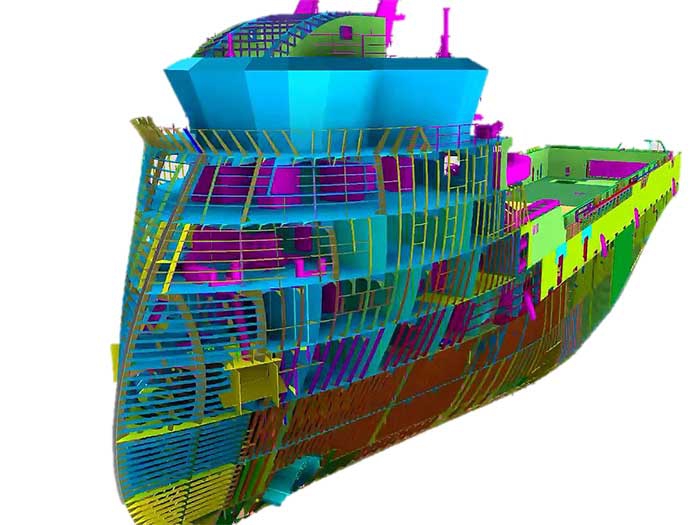
EU backs project aimed at building FRP vessels over 50 m
Written by Nick Blenkey
JULY 24, 2017 — A EUR11 million project backed with funding from the EU is aiming to enable the construction of ships over 50 m in length (including inland waterways vessels), using only composite materials (FRP).
Called Fibreship, the project will develop new guidelines for the design and production of FRP ships, new inspection methods, and software analysis tools. Specifically, this includes the design and application of performance indicators in the evaluation of the different solutions developed for three vessel categories: light merchant ships (containerships), passenger transport and leisure ships (ferries), and special service vessels (oceanographic ships).
A complete guide on the corresponding design will be prepared for each of these three types of ships, in order to prepare guides and regulations for all types of ships.
The different technologies generated in Fibreship will be tested and validated using advanced simulation techniques and experimental tests.
The Project lead and coordinator, Raúl Salinas (TSI engineering SME) , sees the project as an innovative challenge that is technically feasible, as well as an opportunity for the European shipbuilding and fishing industry to gather data on large composite vessels.
“A prototype will be manufactured that can be subjected to real tests, especially regarding the critical functional characteristics of the new materials,” he says. “We shall evaluate an innovative solution with intumescent nanoparticles, together with several biomaterials and recycling fibers that may be more cost-‐effective than the current materials used for the construction of structural elements.”
The new FRP materials and construction processes proposed in Fibreship will improve the efficiency of vessels, both in terms of energy consumption and maintenance costs, offering better solutions for merchant vessels as a whole.
The potential benefits foreseen include:
A reduction of the structural weight of vessels by 30% to 40%
Significant fuel savings from 10% to 15%
Increase in cargo capacity by roughly 12%
Reduction in maintenance costs by 30%
Operating cost savings between 7% for medium-sized container ships and 3% for larger vessels
Increase in recycling ratio from the current 34% to 75%
Greater stability of ships
Substantial reduction of greenhouse gases
Continuous monitoring of the vessel’s structural health
FRP ships do not suffer from corrosion, resulting in a better life cycle performance.
Better underwater acoustic signature
Aesthetically more appealing.
Fibreship is seen as presenting a business opportunity for companies and other stakeholders in the European shipbuilding industry, with its success leading to the widespread application of FRP materials in shipbuilding, to greater competitiveness by European ship operators in the global market, and ultimately, “to a profound and positive impact on the future development of shipbuilding in the world.”
Fibreship is an international consortium of 18 organizations from 11 countries (Cyprus, Denmark, Finland, France, Great Britain, Greece, Hungary, Ireland, Italy, Romania, Spain.





Leave a Reply
You must be logged in to post a comment.